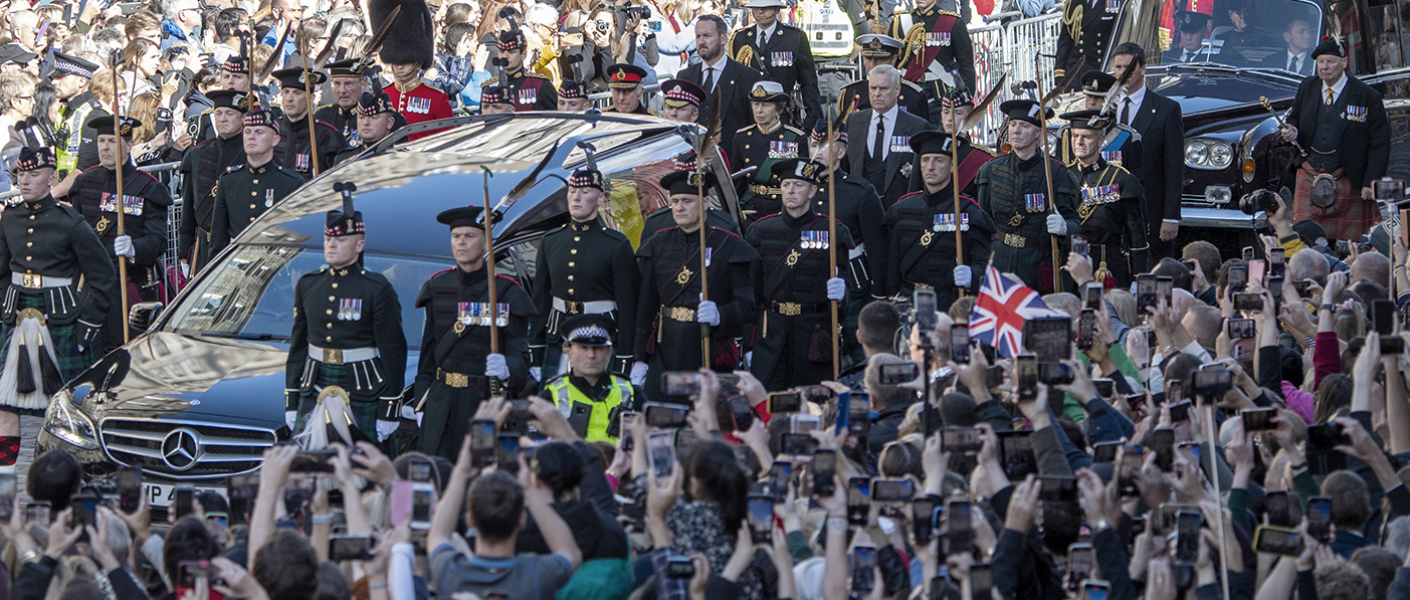United Over the Loss of a Queen
TV networks in the U.S. and the UK approach coverage of Queen Elizabeth II’s passing with on-location commentators, distinctive streaming options and somber gravitas

Even as she celebrated her 96th birthday in relative good health, the passing of Britain’s longest-reigning monarch had long been anticipated, with well-documented and precise steps in place for everything from the plans for a nationwide memorial to the pealing of church bells.
Somehow, however, live coverage of the passing of Queen Elizabeth II is being governed by the peculiar sense that her passing is a shock, despite that it has been a long-expected event.
Coverage on major networks in both the United States and the United Kingdom is being governed by that incongruous logic, particularly in the first 48 hours of coverage. Just as many of its citizens are united in grief, major networks across the U.S. and the UK are in-sync in their coverage of the queen’s passing.

Just before 11 a.m. on Sept. 8 in London, BBC One postponed its programming as the Welsh journalist Huw Edwards gravely announced the passing of Her Majesty. After the announcement, networks in both countries began airing near-continuous, dedicated coverage with American networks from ABC News to PBS anchoring primetime specials and dispatching correspondents to London. David Muir from ABC News hosted World News Tonight from the British capital as did Martha Raddatz and George Stephanopoulos on This Week; Good Morning America aired coverage from Amy Robach in Edinburgh; CNN Chief International Anchor Christiane Amanpour reported from outside Buckingham Palace; Norah O’Donnell led coverage from London for CBS Evening News.
In the U.K., a series of sporting events, award ceremonies and television programs are being postponed out of respect for the late queen. Many news outlets have prepped streaming programming that worked as a companion to the television broadcast of pre-planned funerial events. Unlike the death of the previous British monarch — Elizabeth’s father George VI in 1952 — profuse amounts of streamed coverage include dozens of well-researched compilation biographies populated with copious library footage from the queen’s many decades of service.
Newspaper outlets like the Guardian, the New York Times and the Washington Post streamed programs that drew in millions of viewers. The Queen’s Sense of Humor Remembered, for example, is a richly detailed streaming compilation by ABC News Australia that explained in intricate details of the queen’s funeral plans, noting minutiae such as which public figure was the first to be told of the queen’s death (the prime minister), what’s the meaning behind the phrase Spring Tide (referring to King Charles’ ascension to the throne) and how church bells should be rung (they must be muffled).
Livestreams originating on the websites of news outlets like The Guardian and Channel 4 News also gave viewers the opportunity to watch the live streams of mourning crowds as they stood quietly outside the gates of Windsor Castle and Buckingham Palace.
The professional video industry's #1 source for news, trends and product and tech information. Sign up below.
A few networks took the time to directly address the influence that Queen Elizabeth and British society has had on programming, particularly the spate of popular drama anthology television series shown in the United States. One of PBS’s signature programs, Masterpiece, has brought British programming to U.S. audiences for more than five decades, sometimes in partnership with the BBC as well as U.K. channels ITV and Channel 4.
“As we remember Queen Elizabeth’s achievements, we remain grateful for her long-standing support of our British colleagues and their exemplary work,” said Susanne Simpson, executive producer of Masterpiece. “As admirers of British culture, this is a watershed moment for all of us.”
From reporting on King Charles III’s new coat of arms to the changing of the lyrics of the national anthem, “this is likely the largest funeral arrangement undertaken in our lifetime,” said the voiceover of the ABC Australia video stream Operation London Bridge, which explained the progression of the queen’s funeral and garnered 2.3 million views in the first 48 hours of its posting.
Coverage of the 10 days of mourning will cap on Sept. 19, when the queen’s funeral takes place at Westminster Abbey and the cortege heads to her final resting place in St. George’s Chapel at Windsor Castle.
In the U.S., networks like Newsy, owned by the E.W. Scripps Co., plans to cover the funeral in its daily newscasts starting at 6 a.m. on Monday. The network will also offer a live stream of the ceremony on Newsy.com and on the network’s OTT channels, with two reporters on the ground in London to cover the events and Britain’s reaction to it, said Eric Ludgood, head of Newsy.
This article has been updated.
Susan Ashworth is the former editor of TV Technology. In addition to her work covering the broadcast television industry, she has served as editor of two housing finance magazines and written about topics as varied as education, radio, chess, music and sports. Outside of her life as a writer, she recently served as president of a local nonprofit organization supporting girls in baseball.

